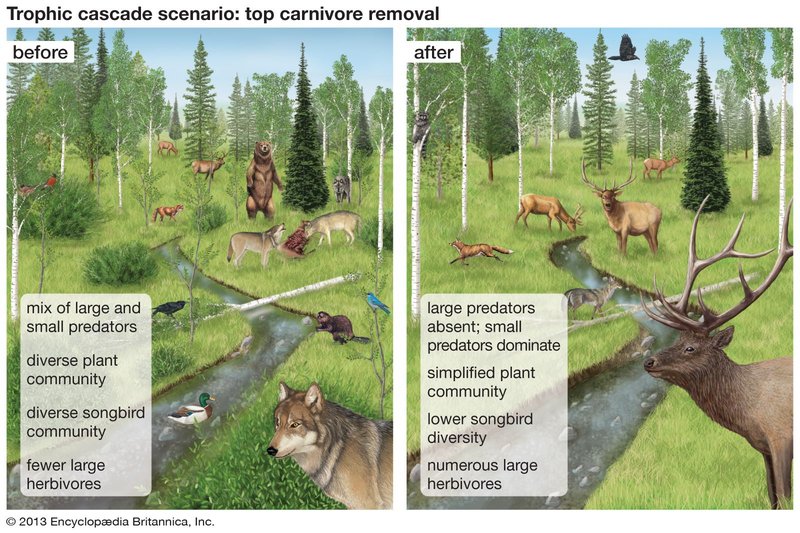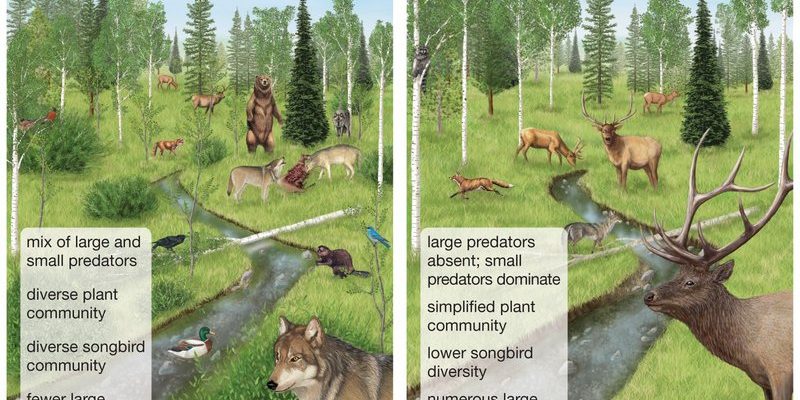
Now, if you’re new to this topic, simply put, these natural predators create a little ecosystem of sorts. Just as a good movie has a hero and a villain, these predators play the role of heroes, preventing wolf worms from overwhelming certain animal populations. Let’s dive into who these predators are and how they work to keep wolf worm numbers in check.
Understanding Wolf Worms
Wolf worms, scientifically known as **Cuterebra** larvae, are the larvae of flies that usually target small mammals, like rabbits, squirrels, and even pets. These little critters burrow into the skin of their host, causing discomfort and sometimes serious health issues. Seeing wolf worms in action can be unsettling, but they play a role in the ecosystem. When the larvae hatch, they must find a host to survive.
The giant larvae can grow to impressive lengths, making them easy for predators and even humans to notice. Unfortunately, their growth often leads to negative consequences for the host animal, which might suffer from infections or other health complications. Since wolf worm infestations can lead to severe issues, it’s crucial to understand what keeps their populations in check.
Predators of Wolf Worms
Alright, let’s unveil the cast of natural predators that tackle the wolf worm. Here are some of the main players in this ecological drama:
- Birds – Certain bird species, such as crows and magpies, have an appetite for these larvae. They will pick at the skin of the infected animal to reach the larvae, effectively removing wolf worms in the process.
- Small Mammals – Animals like raccoons and feral cats are known to consume wolf worms when they can access them. Their natural hunting instincts allow them to seek out these larvae hidden beneath the skin of larger prey.
- Insects – Various insects, such as beetles, can prey on the eggs of the wolf worm, preventing new infestations from hatching.
These predators not only feast but actively help in reducing the populations of wolf worms. Without them, we could see a dramatic increase in these larvae, which could be detrimental to many animals, especially in areas where they’re prevalent.
The Role of Birds in Controlling Wolf Worms
Birds are like nature’s cleanup crew, swooping in to help manage the wolf worm populations. Species like **American crows** and **blue jays** have been observed digging into the skin of infected animals to feast on the larvae.
Imagine a bird perched on a branch, keenly observing a vulnerable rabbit. When the moment’s right, it swoops down to remove the larvae from the rabbit’s skin. It’s a raw but fascinating glimpse into the circle of life. By controlling the larvae numbers, these birds not only help individual animals but also maintain balance within their ecosystem.
What’s more, the presence of these birds can indicate a healthy environment. If you notice more predatory birds in your area, it might be a sign that they’re doing their job, keeping wolf worm populations and, by extension, the larger animal population healthy.
Small Mammals: Unexpected Allies Against Wolf Worms
When we think about predators, we often picture large carnivores, but small mammals can play an essential role too. Animals like **raccoons, feral cats**, and even **opossums** have been known to munch on wolf worms.
Imagine a raccoon, rummaging through underbrush, its keen sense of smell leading it to a rabbit with a wolf worm infestation. With a few quick nibbles, the raccoon extracts those nasty larvae. It’s a surprising but crucial aspect of these animals’ diets that showcases their adaptability in the wild.
These small mammals often scavenge and hunt in packs or alone, keeping wolf worm numbers down while also benefiting from a nutritious meal. Their role in the ecosystem might seem small compared to larger predators, but it’s just as important.
Insects and Their Impact on Wolf Worm Life Cycles
When we delve into the less obvious predators of wolf worms, insects take center stage. You might not think of insects as fearsome hunters, but certain species can significantly impact wolf worm populations.
For instance, some beetles specialize in preying on the eggs and larvae of the fly that lays wolf worm eggs. By breaking this reproductive cycle, these insects help keep wolf worms from rising in numbers. It’s almost a behind-the-scenes effort in controlling these pests that many people overlook.
This intricate balance among species highlights the importance of every creature in an ecosystem, no matter how small. Every insect, bird, and small mammal contributes to the larger picture, ensuring the natural world remains in harmony.
Why Keeping Wolf Worm Populations in Check Matters
You might be wondering why it’s so crucial to control wolf worm populations. The answer is simple: health. When wolf worms go unchecked, animals that host these larvae can suffer severe health issues, leading to stress, pain, and potentially death. This not only affects individual animals but can have a cascading effect on the local ecosystem.
Healthy animal populations support a balanced environment. They contribute to the food chain and help sustain other wildlife. If wolf worms become too numerous, they can lead to a decline in populations of their hosts, which might, in turn, affect predators that rely on those animals for food.
In other words, keeping the wolf worm numbers down helps maintain the entire ecosystem’s stability. The natural predators we’ve discussed serve a vital purpose in ensuring that balance.
Supporting Natural Predators in Your Area
If you care about wildlife and want to support these natural predators, there are simple steps you can take. Here are a few suggestions:
- Create Habitats – Plant native flora that attracts birds, insects, and small mammals. The more diverse your garden, the more wildlife you can support.
- Reduce Pesticide Use – Chemicals harm not just pests but also the natural predators that help control them. Seek natural pest control methods instead.
- Keep Pets Indoors – Pets can pose a threat to wildlife. Try to keep pets indoors or supervise them when outside to reduce predation on small mammals and birds.
By fostering an environment that supports these natural predators, you’re not just helping them; you’re contributing to the health of the entire ecosystem around you. It’s a win-win for everyone involved.
In conclusion, natural predators significantly influence wolf worm development, keeping their populations in check through their own unique hunting and feeding strategies. By understanding and supporting these predators, we play a part in maintaining a balanced ecosystem—ensuring that wildlife thrives, and wolf worms remain under control. So, as you venture into nature, remember the role each creature plays, and appreciate the delicate dance of life happening all around you!

